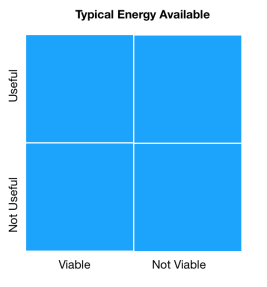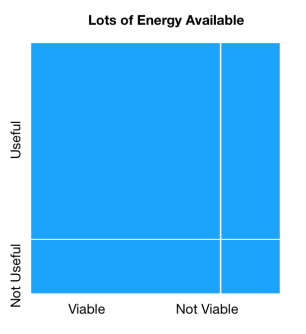Dark Age America: Climate Change, Cultural Collapse and the Hard Road Ahead
By John Michael Greer
published September 2016, New Society Press
I taught middle school history for nearly twenty years. For a great deal of that time, I taught ancient history or Latin or both — I was more interested, always, in teaching the big history of the world ideas, than I was in teaching the joyous celebration of America’s constantly-progressing future. I never understood why I preferred teaching ancient history and world cultures, though, except that there was a nagging feeling underlying my childhood and teen years in New York City and suburban Connecticut, this can’t possibly last.
It’s a strange feeling for a kid to grow up with. Walking around New York, biking around Connecticut, there was a tremendous sense that the United States was on top of the world. The Soviet Union was a threat to American survival, of course, at least it seemed so in those days. But there was also a sense that the warehouse and factory buildings of our urban New York neighborhood had been converted to offices where no one did anything except push papers around. No one seemed to be making anything. No one appeared to be doing anything. I became aware that my father’s firm built things elsewhere, and they based their business in New York because everyone in their line of work was there… but they traveled elsewhere to do the work. We moved to the suburbs and out of Manhattan because intermittent power outages and crime and illness convinced my parents that NYC was going to hell in a handbasket in the late 1970s, and we should get out while we could.
Once we got there, though, it struck me that the system of great suburban schools, houses with wide expanses of lawn that didn’t grow anything, the one neighbor with a vegetable garden who grew stuff being a pariah, the complete lack of places that made anything, the vast distances between where people worked or played or lived… this wasn’t sustainable either.
If the cities weren’t sustainable, and the suburbs weren’t sustainable, then it was very likely that the rural areas weren’t sustainable either. Something had to give, somewhere, eventually. The world as I could observe it could not be expected to last — as it had not lasted for the cultures that fascinated me in school. I looked at photographs of ruins in ancient Greece and Rome, Egypt, Mesopotamia, the Middle Ages…. as Greer points out, each had such a distinctive style that I can identify their remains with some certainty even at distance or in a fuzzy photo. It’s their later ruins that become indistinct, vague, and shapeless. You can see the same thing in the artwork, and in the fashion styles, of each culture — distinctive and precise on the way up, vague and shapeless on the way down.
So I come to Greer’s writing with some confirmation bias. I already believe that modern industrial civilization is unsustainable. I just didn’t have language for why that might be so. And now, fortunately or unfortunately, and also decades too late to solve the problem, I have that language.
•••
Greer musters his arguments in nine chapters, but in seven major parts. The first argument is anthropogenic climate change — the planet’s weather is changing. It’s hard to say for sure if it’s going to get warmer or colder, but the weather is getting less predictable no matter what. Greer believes that it’s largely because we’ve been hauling petrochemicals out of the earth for about a hundred years, and converting them to carbon dioxide gas in the atmosphere.
His metaphor is this: fill your bathtub with water. Put your hand in the water, and gently move it back and forth in the water. Then hold your fingers together, to make a paddle, and move your hand more and more energetically. At first, with fingers apart, your hand will pass through the water smoothly and the water will remain stable. Then as your hand becomes a solid wall, it stirs up waves that are fairly rhythmic; as it moves faster, the water in your tub becomes a chaotic turbulence which will eventually slosh out of the tub and onto the floor.
This is climate change in a moist nugget — that at first, human disruptions to the environment stirred up particular waves; and now they’ve created a chaotic turbulence that may take decades or centuries to truly settle (since the planet is much larger than a bathtub). Humans are now going to have to live in that turbulence for a while, and it’s unclear what will happen. However, Greer points out, we do have an idea what will happen in North America: if climate change makes the planet warmer, the Southwest will become a vaster desert spreading into the Great Plains and the West will become a wildfire; the South will become a humid jungle; and the northeast will become warmer and wetter. Sea levels will rise, possibly as much as fifty or sixty feet, and much of the two coastal urban zones will be uninhabitable.
The second argument is Demographic. If vast areas of North America become uninhabitable, people are going to move or they’re going to die. It doesn’t take a massive uptick in death rates, and a downward tick in birth rates, for a massive change to affect the continent over a fifty-year period. The event called 9/11/2001 — airplanes crashing into towers — caused one such downtick in birth rates. So did the 2008 housing market crash. So far, neither of these downward ticks have reversed. On the other hand, we have lots of evidence that people are not vaccinating their children like they used to; that nutrition and water supplies have been compromised (sometimes for profit, as in Flint, MI); and that US troops are now fighting in places where we didn’t even know we’d sent them, like Niger and Chad and Sudan. So that’s Famine, Pestilence, and War taken care of … Death doesn’t have to do a lot more when all three of her Horsepersons are also in the game. Greer estimates that in five hundred years, the population of North America may be as low as 5% of its current total.
The next argument is Political Unraveling. It’s not in Greer’ book, but as I write this in 2017, barely two years later, the American political alt-right is talking about hanging journalists; the American political alt-left is making jokes about guillotines… and these jokes are becoming funny. Each of these horrific methods of execution has very particular targets — . Greer doesn’t suggest either of these as a solution, though. Instead, he notes that America (and Mexico and Canada to a lesser extent) has done a great job of allowing its political system to be governed by a smaller and smaller elite, with an ever-narrower interpretation of what government is supposed to do. The result is that a narrower and narrower number of people are served by that government; and a larger and larger number of people are desperate for alternatives.
Then there’s the Economic Collapse. Greer draws upon Arnold Toynbee here, in dividing America’s population into four groups: the elites, the privileged, the internal proletariat, and the external proletariat. The external proletariat are the people who live in American client-states overseas, that have joined their economic well-being to the US in exchange for safety and security in a world that American troops patrol (some might say prowl). In, say, Thailand or Indonesia or Honduras, wages remain artificially low and American-trained police forces suppress protest, so that goods made there can be shipped and sold in American stores. The internal proletariat is made up of the growing number of Americans who are unemployed. The privileged are those that have some economic and political power, who have good-paying jobs, and the elite are the ones who have their boots licked by the privileged. It’s a nice model, because it’s now possible to see that the ranks of the privileged are decreasing — witness the way in which, say, members of the State Department are being thrown off the payrolls nearly daily, either through retirement or transfer or firing. It’s possible to see the ranks of the internal proletariat growing, as the permanently-unemployed population keeps rising and the temporarily-unemployed remain steady — the second category are turning into the first, and the privileged are joining the temporarily unemployed at a pretty steady rate. Sooner or later, the internal proletariat will decide it’s had enough.
Then there’s the Suicide of Science. Science is the modern world’s great intellectual achievement, of course — we’ve probed the spaces between both stars and atoms, unlocked the basics of biology, made incredible discoveries. However, each generation of discovery costs roughly twice what the last generation cost; the device that found the Higgs Boson cost multi-billions of dollars; the Manhattan Project that unlocked the doors of atomic warfare cost a billion dollars; while TNT cost a few million at most. Although I’ve chosen particularly violent examples, it’s clear that the cure for polio was the last major disease that humans have ‘cured’. It seems to benefit the health care industry more to ‘treat’ AIDS or Ebola or Diabetes than to try to cure them — a patient whose illness is cured is no longer on the hook for expensive medicines. Even so, from within the worldview of science, everything is rational; and it looks like every single problem that affects humanity will be solved eventually, present budget cuts and venal pharmaceutical companies notwithstanding.
From the outside, though, science looks remarkably venal and self-serving. Vaccinations might do something to your kid besides just protect them against disease, but how do you know? When a man in a lab coat tells us that everything is fine, it seems all right… right up until the time when it becomes clear that the man in the lab coat was wrong about other things… like, in the 1970s, when the scientists told us we were on the verge of the next ice age; or the time in the 1950s when they said plate tectonics was pseudoscience. Or the time in the 1920s when the scientific economists assured us that tax cuts for wealthy individuals and businesses would grow the economy. There is a history and a written record that can be consulted by non-scientists, and that written record shows us that science gets a lot wrong — sometimes for good reasons like mistakes, and sometimes through outright fraud. It’s hard to believe scientists when their great intellectual and social project requires them to spend millions or billions of dollars on inconclusive or fraudulent results.
The next part of Greer’s argument is the Twilight of Technology. Here he had some grid that I found very helpful, and which I’m going to try to reproduce here.  The first of these grids shows that in most of human history, societies have been able to divide any technological suite broadly into one of four categories, like a Punnett Square from biology classes, based on its viability and its usefulness. Some technologies might have been viable but not useful — steam-powered cars in Roman times come to mind — and so the technology existed but was never developed to a standard model of economic development across the society. Others were both viable and useful, such as weaving or spinning thread, and advances in these technologies were always appreciated.
The first of these grids shows that in most of human history, societies have been able to divide any technological suite broadly into one of four categories, like a Punnett Square from biology classes, based on its viability and its usefulness. Some technologies might have been viable but not useful — steam-powered cars in Roman times come to mind — and so the technology existed but was never developed to a standard model of economic development across the society. Others were both viable and useful, such as weaving or spinning thread, and advances in these technologies were always appreciated. 
Some societies, like for example OURS, have had a great deal of excess energy to work with. The result is that the range of useful and viable technologies has become much larger than normal — battery-powered hats with built-in cooling fans and beer siphons come to mind, for example. In a world with only muscle power, animal power, and some access to fire and passive solar, these sorts of hats would never be made… it would be too expensive with the available energy to make them. People would enjoy the image or the idea of them, perhaps, but it wouldn’t be viable.
 Of course, in a society with even less energy than a typical Roman Empire or Egyptian Old Kingdom (imagine having enough energy to build pyramids out of 20-ton blocks of stone, eh?), there’s the possibility that the range of viable and useful technologies shrinks substantially. If you can’t buy the energy (solar panels, oil barrels, propane tanks, coal nuggets, cords of wood, or the muscle power of your neighbors) to do a task, then you can’t do it. A whole range of tools, technologies, and skills become useless.
Of course, in a society with even less energy than a typical Roman Empire or Egyptian Old Kingdom (imagine having enough energy to build pyramids out of 20-ton blocks of stone, eh?), there’s the possibility that the range of viable and useful technologies shrinks substantially. If you can’t buy the energy (solar panels, oil barrels, propane tanks, coal nuggets, cords of wood, or the muscle power of your neighbors) to do a task, then you can’t do it. A whole range of tools, technologies, and skills become useless.
Take the example of a supersonic airplane, as Greer does. In the 1970s, Boeing, Airbus and the Russians were all working on supersonic passenger jets. London to New York in three hours, maybe less! The technology existed — the Concorde made flights until 2003 — but it was never economically viable. It ceased being developed because everyone realized that the costs of the technology vastly outweighed its benefits except for military purposes. Take nuclear power, which still can’t store its spent fuel and requires massive government subsidies, and (when it fails) renders thousands of square kilometers uninhabitable by human beings.
Now… imagine if you will that commercial air travel became too expensive, and all commercial flights were canceled… not all at once, but over a decade, say, as fuel costs and airport security costs rose to be higher than the cost of a seat on a plane. The interlocking realms of technology for baggage handling, for ticketing, for passenger boarding, for food management, for waste management, for air processing, would suddenly become not-useful… it would still be viable, but no one would want it, and all that metal, glass and plastic, those miles of wiring on a Boeing 747, would become available for other purposes. So would most of the commercial airport terminals. They’d be stripped of their useful materials, and turned into ruins.
When the costs of a technology outweigh its usefulness, it gets scrapped. Often literally-literally, and not metaphorically. Imagine it happening to the Internet… not all at once, maybe, but a little at a time… first in rural areas that don’t have the population density to pay for their services, then in suburban areas that don’t have the need, then in urban areas as it becomes clear that telephone and messenger couriers are less expensive, and finally it’s reserved for military purposes alone.
The final part of Greer’s argument is Cultural Collapse. America’s technological greatness is also one of its great weaknesses. You can’t build a computer, for example, with locally sourced materials, though sometimes you can build a radio that way. And yet — our games, our television stories, our Internet, our architecture, our art — so much of it is utterly dependent on available energy. If Greer is right, and the limitations of petrochemicals are going to… turn off parts of our electrical grid, damage our transportation-obsessed society, and shoot our Internet operations costs into regions astronomical… then our culture is going to take a serious hit, too. Think about the ways in which we idolize and honor our celebrities, how we only admit a coveted few to the ranks of ‘great actors’, and reserve most of our entertainment dollars for movie houses and for games that are only viewable or playable with massive amounts of energy inserted into the equation? That’s the popular-culture side. On the intellectual side, our universities and academic world are tied into the same binds as Suicidal Science, and neither our sports nor our political realm nor our military throws up many people worthy of wider emulation. Something is breaking, here, too.
In the closing chapter of the book, Greer offers some ways that individuals can begin to fix some of these problems in their personal lives — much of this advice centers around two principles. The first of these, he identifies as LESS — Less Energy, Stuff and Stimulation. Figure out ways to travel on foot or by bicycle instead of with a car; make do in the world with fewer possessions. Get yourself less riled up on the Internet or elsewhere.
The second piece of advice is a parallel principle — “Collapse now and avoid the rush.” If North America is going to come apart at the seams between left and right, rich and poor, armed and unarmed, nomadic and settled, scientific and unscientific, hungry and well-fed, paid and unpaid, and so on… the work of survival and thriving is carried out at levels other than ordering other people around. Rather, it’s done at the level of personal involvement — learning (what hard work it is) to grow your own food, brew your own beer, make your own clothes, build relationships with other people, learn to work with your own local political system, and more.
For the larger world of America, though, Greer thinks it’s game-over. You are unlikely to change the political and economic elites’ minds, for example, over the ideas embedded in the GOP tax reform plan — a massive cut to taxes on corporations and the wealthy, a massive increase in the taxes on the lower and middle classes. You’re unlikely to be able to worm your way high enough into the privileged or elite classes of society to be able to ride out the storm for the rest of your life; and even if you do, there is a very good chance that you will be forced out of those classes by economic, political or cultural unorthodoxy or inconvenience well before your death; or even if you remain to the very last, the last few hours of your life might be spent riding in a tumbril-equivalent toward a guillotine-equivalent.
•••
I admit, I have a bias toward believing Greer’s book. I always have. I know how societies fall after decades of teaching those processes; I am far more inclined to believe in the rise, maturation and fall of civilizations than I am in their perpetual growth and improvement, which is the typical bog-standard version of American history. And I am not inclined to believe in some sort of divine interventionism or apocalypse that destroys us before the slow, steady collapse of a civilization that has forgotten how to solve crises.
But I could be wrong. Greer could be wrong.
All the same, there’s a standard to be met, now. Greer’s book lays out a credible outline of how civilizations fall, that’s backed up with evidence from Japan’s Heian period, Egypt’s Old Kingdom, the collapse of the Greek poleis model, the Roman Empire, and more. No civilization lasts forever, or at least none of the ones tried so far. It doesn’t look like this one is going to last, either, though, despite our propaganda — between non-renewable resource decline in the form of spent petrochemical stocks, political gridlock, economic and cultural collapse, science’s suicide, and the gradual twilight of technology, we are likely not going to work ourselves free of this monster before it eats America.
It may be the case that, by the time the last President of the United States is deposed by a barbarian warlord from Omaha or Topeka or Tuscon or Alberta, that few will notice or care — and none will weep.
Rate this:Share this:- More





